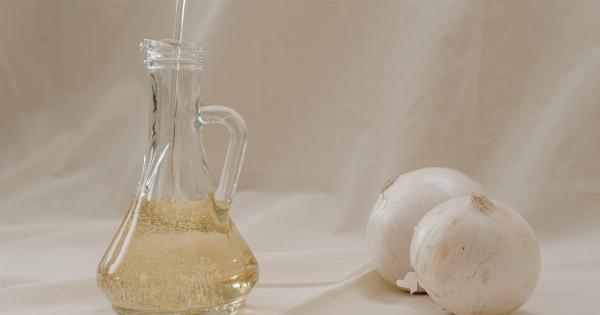Cholesterol is a fatty substance found in every cell of our body. It plays a crucial role in various physiological processes such as hormone production, vitamin D synthesis, and digestion.
However, having high levels of cholesterol in your blood can increase your risk of developing heart disease.
Understanding cholesterol
Before delving into the relationship between cholesterol levels and legs, it’s important to understand the different types of cholesterol.
HDL cholesterol: The good cholesterol
High-density lipoprotein (HDL) cholesterol is often referred to as the “good” cholesterol because it helps remove excess cholesterol from the bloodstream and transports it back to the liver for processing and excretion.
HDL cholesterol can help protect against heart disease.
LDL cholesterol: The bad cholesterol
Low-density lipoprotein (LDL) cholesterol is often called the “bad” cholesterol. It contributes to the build-up of plaque in the arteries, narrowing them and increasing the risk of heart disease.
High levels of LDL cholesterol can lead to atherosclerosis, a condition where the arteries become hardened and narrowed due to plaque deposits.
The link between legs and cholesterol levels
Believe it or not, your legs can provide valuable hints about your cholesterol levels. In some cases, certain leg symptoms may indicate the presence of underlying cholesterol-related issues.
1. Peripheral Arterial Disease (PAD)
One of the most commonly observed leg conditions associated with high cholesterol levels is Peripheral Arterial Disease (PAD). PAD occurs when the arteries in the legs become narrowed or blocked due to plaque buildup.
A hallmark symptom of PAD is intermittent claudication, a cramping leg pain that occurs during physical activity and improves with rest. This pain is often a result of reduced blood flow to the legs due to narrowed arteries.
2. Xanthomas
Xanthomas are cholesterol deposits that can occur in various parts of the body, including the legs. These fatty deposits appear as yellowish bumps or nodules on the skin.
They form when excess LDL cholesterol accumulates and deposits in the soft tissues, such as tendons or skin. Xanthomas generally indicate a disruption in cholesterol metabolism and may require medical attention.
3. Poor wound healing
Cholesterol plays a vital role in the body’s natural healing process. Elevated LDL cholesterol levels can impair this process, leading to delayed or poor wound healing.
If you notice that wounds on your legs are taking longer than usual to heal or are not healing at all, it may be an indication of high cholesterol levels.
4. Discoloration or pale skin
When blood flow to the legs is compromised due to cholesterol-related issues, the skin may appear discolored or pale. This discoloration typically occurs due to reduced oxygen supply to the legs.
If your legs frequently appear unusually pale or discolored, it is essential to consult a healthcare professional to determine the underlying cause.
5. Leg ulcers
In severe cases of cholesterol-related leg conditions, such as PAD, the reduced blood flow can cause leg ulcers. Leg ulcers are open sores that can be painful, slow to heal, and prone to infection.
If you notice the presence of leg ulcers, particularly in combination with other leg symptoms, it may be an indication of underlying cholesterol issues that require medical intervention.
6. Pruritus
Pruritus, or persistent itching of the legs, can be associated with high cholesterol levels. Itching may occur due to the build-up of cholesterol in the blood vessels of the legs, leading to skin irritation.
If you experience persistent itching in your legs without any apparent cause, it is recommended to consult a healthcare professional for proper evaluation and diagnosis.
7. Numbness or tingling
In some cases, individuals with high cholesterol levels may experience numbness or tingling sensations in their legs. This may occur due to reduced blood flow, nerve compression, or peripheral nerve damage resulting from cholesterol-related conditions.
8. Varicose veins
While varicose veins are not directly linked to cholesterol levels, they can be a manifestation of circulatory issues in the legs. Varicose veins are enlarged, gnarled veins that often appear dark purple or blue.
Elevated cholesterol levels can contribute to poor circulation, which may exacerbate existing varicose veins or increase the likelihood of developing them.
9. Leg cramps
Leg cramps are a common occurrence that can have various causes, including cholesterol-related issues. Although leg cramps can be caused by factors unrelated to cholesterol, they may be a symptom of poor blood circulation due to narrowed arteries.
10. Swelling or edema
Elevated cholesterol levels can contribute to inflammation, which can lead to fluid retention and swelling in the legs.
If you notice persistent swelling or edema in your legs, it is important to consult a healthcare professional for an accurate diagnosis and appropriate management.
Conclusion
Although leg symptoms alone cannot provide an accurate assessment of an individual’s cholesterol levels, they can serve as essential indicators of potential cholesterol-related issues.
If you experience any of the mentioned leg symptoms, it is crucial to consult a healthcare professional who can evaluate your overall health, including cholesterol levels, and provide appropriate guidance and treatment.





























